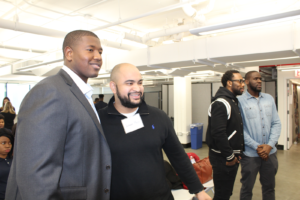Shifting Demographics: How School Districts are Diversifying their Workforce to Serve All Students
Key Points
-
Rural and suburban areas across the country are becoming more diversified with more families-of-color enrolling students in school.
-
Five districts across the country have created talent pipelines and workforce initiatives to diversify their teaching populations.

By: Kimberly A. Smith
In rural and suburban areas across the country, school districts are experiencing significant demographic shifts in their populations – with some changing as much as 20% in less than two years. Cities are expanding housing to attract younger, high-income individuals, while working and middle-class families are moving to the perimeter and beyond to find affordable housing. As a result, suburban towns across the country are becoming more diversified with more families-of-color enrolling students in school districts that have historically been predominantly white.
- Students of color enrolled in the Downingtown Area School District, a Philadelphia suburb, increased from five percent in 1994 to 24 percent in 2020. During the same time period, Gwinnett County Schools in Georgia saw its students-of-color enrollment go from 13 percent to 65 percent.
- The number of Hispanic students in Riverhead Central School District, on New York’s Long Island, increased from 347 to 3,219 between 2000 and 2020.
- Between 2014 and 2020, white students at Cherry Hill Public Schools in New Jersey declined by 5.7 percent. In 2020, Asian students made up 17.7 percent of the student population and Hispanics became the third-largest group at 13.2 percent.
- Nationwide, Hispanic students account for 27 percent of public school students, and that percentage has nearly doubled since 1995 (Pew Research). Meanwhile, the percentage of white students in the suburban public schools of the country’s 25 largest metro areas dropped by nearly 20 percent between 2006 and 2017 (EdWeek Research Center).
Despite the current climate and debate about teaching about race in schools, the fact remains that most parents are interested in their students attending diverse schools. And, most students recognize that their generation is more diverse than prior generations and are interested in learning about cultures outside of their own.
As students and communities evolve, so too must the education system to ensure that every student receives the highest level of academic and wellbeing support.
Kimberly A. Smith
As students and communities evolve, so too must the education system to ensure that every student receives the highest level of academic and wellbeing support. District leaders are recognizing this moment as an opportunity rather than a divide, as a significant percentage of the current teacher demographic retires or leaves the profession, a clear and present opportunity is in expanding the current pipeline and workforce models to attract the teacher talent of the future.
Over the past two years, a cohort of school districts in Digital Promise’s League of Innovative Schools have been engaged in an initiative within the Center for Inclusive Innovation to design the teacher workforce of the future. Their focus has been on how to create talent pipelines and workforce initiatives to diversify their teaching populations, recognizing that to teach all students, schools need teachers that reflect all students.
In the 2022-2023 school year, each district will launch a unique program co-designed in partnership with higher education institutions, regional partners, policymakers and teachers of color. The programs are focused on building an infrastructure for recruitment and retention that will create a sustained, diverse workforce to meet the needs of students. The programs include:
- A statewide cohort of districts that is supporting the efforts of teachers to lead the creation of a diverse teachers’ network. The network will provide mentoring, coaching, mental health support and other resources designed by teachers.
- A district that is designing a robust fellowship program in partnership with local higher education institutions and teachers focused on the recruitment and retention of Black male teachers – who represent a sparse 2% of the U.S. teaching workforce today.
- A district that is creating a network of partnerships with Historical Black Colleges and Universities and the Thurgood Marshall College Fund to anchor a “grow your own” initiative to encourage students of color to pursue teaching careers.
- A district that is engaging teachers within the district as partners in co-creating a culture and professional learning supports that embrace all teachers.
- A district in a suburban area who is identifying urban-suburban partnerships to bridge the demographic divide and attract a diverse workforce.
Responding to the critical need to build a talent infrastructure honors and respects the teaching profession by supporting a healthy and diverse workforce of teachers of all races and experiences. If we know the influence one great teacher can have on a child’s life, imagine the rainbow effect of thousands.
Kimberly Smith is the chief inclusive innovation officer at the Center for Inclusive Innovation at Digital Promise, an equity-centered R&D network that has produced the “Pipeline and Retention of Teachers of Color” report.



Nadia Rolle
I absolutely enjoyed reading this article and seeing the efforts to align educational instruction and environments with the change in demographics. It only seems fitting to do so as cultures become more intertwined, there are now different cohorts of learners and students of different backgrounds with a variety of needs to ensure their educational success. Great post!